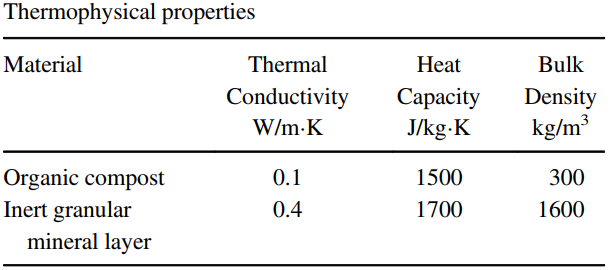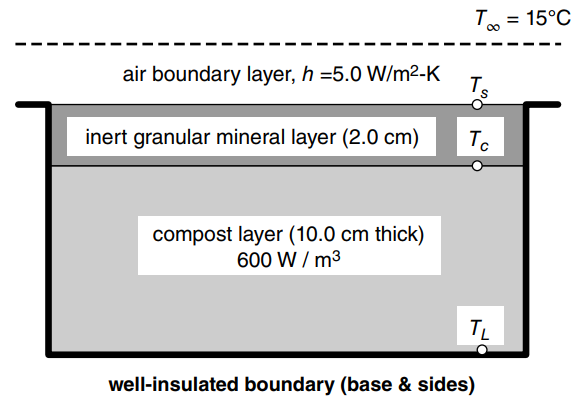Consider the compost bed shown in the right-hand figure. The dimensions of the bed are 1 m
Question:
 a. What is the steady-state heat-transfer rate from the compost bed to the surrounding air?
a. What is the steady-state heat-transfer rate from the compost bed to the surrounding air?
b. What is the temperature at top of the organic compost layer€”i.e., Tc?
c. What is the temperature, TL, at the base of the compost bed?
d. If the thickness of the compost layer is increased, then which will occur?
1. Tc and Ts will both increase
2. Tc will increase but Ts will stay the same
3. Tc and Ts will not change
Cross section of compost bed.
Fantastic news! We've Found the answer you've been seeking!
Step by Step Answer:
Related Book For 

Fundamentals Of Momentum Heat And Mass Transfer
ISBN: 9781118947463
6th Edition
Authors: James Welty, Gregory L. Rorrer, David G. Foster
Question Posted:





